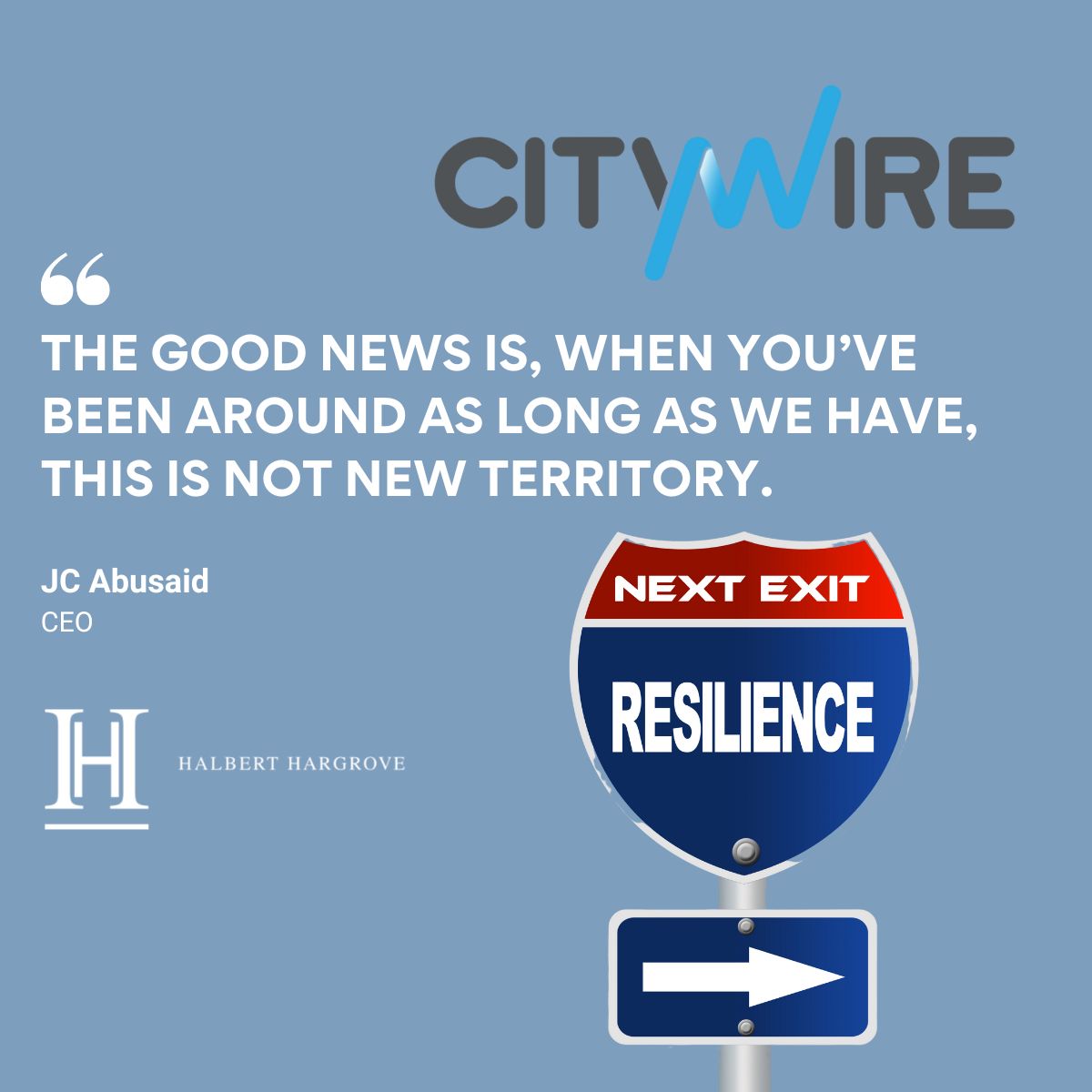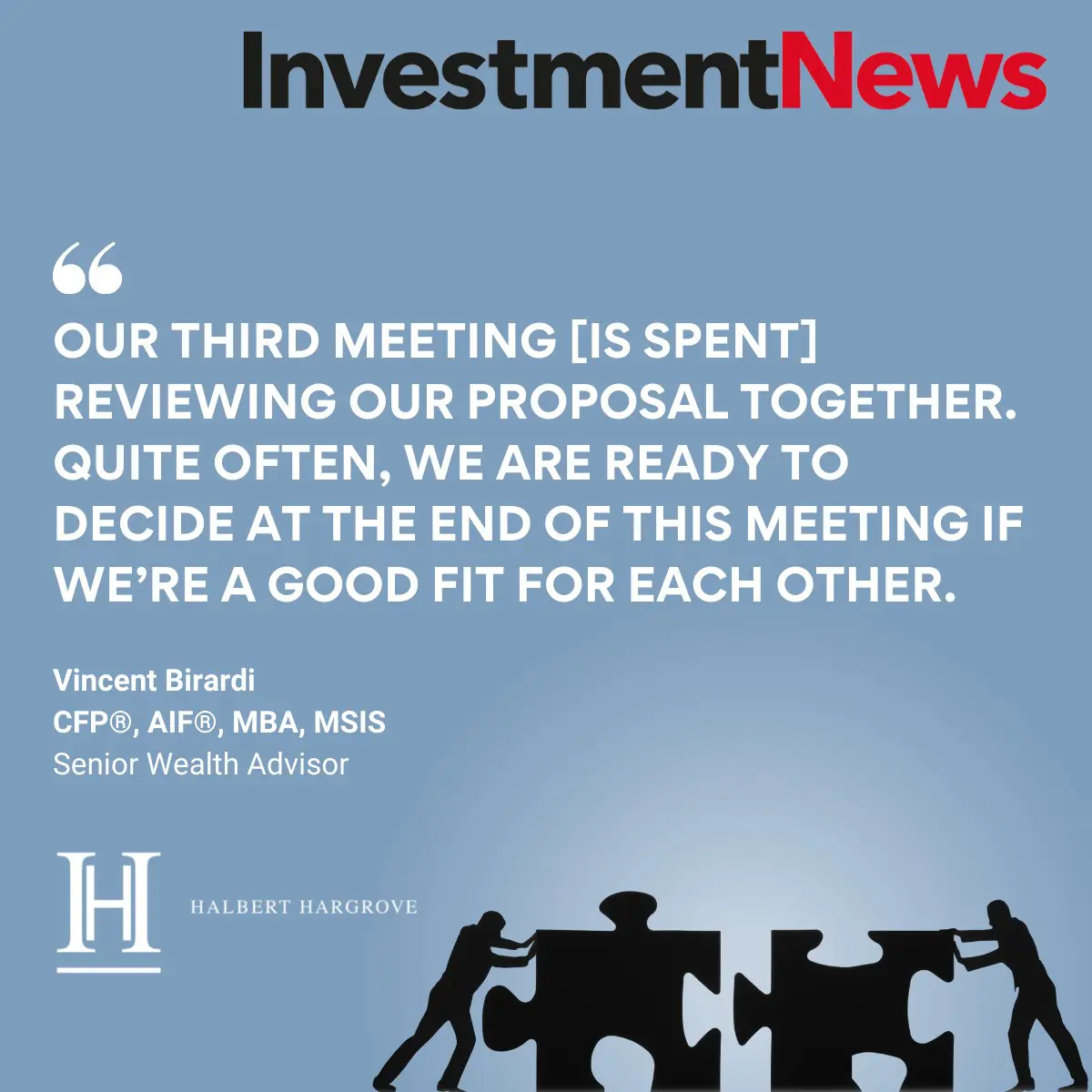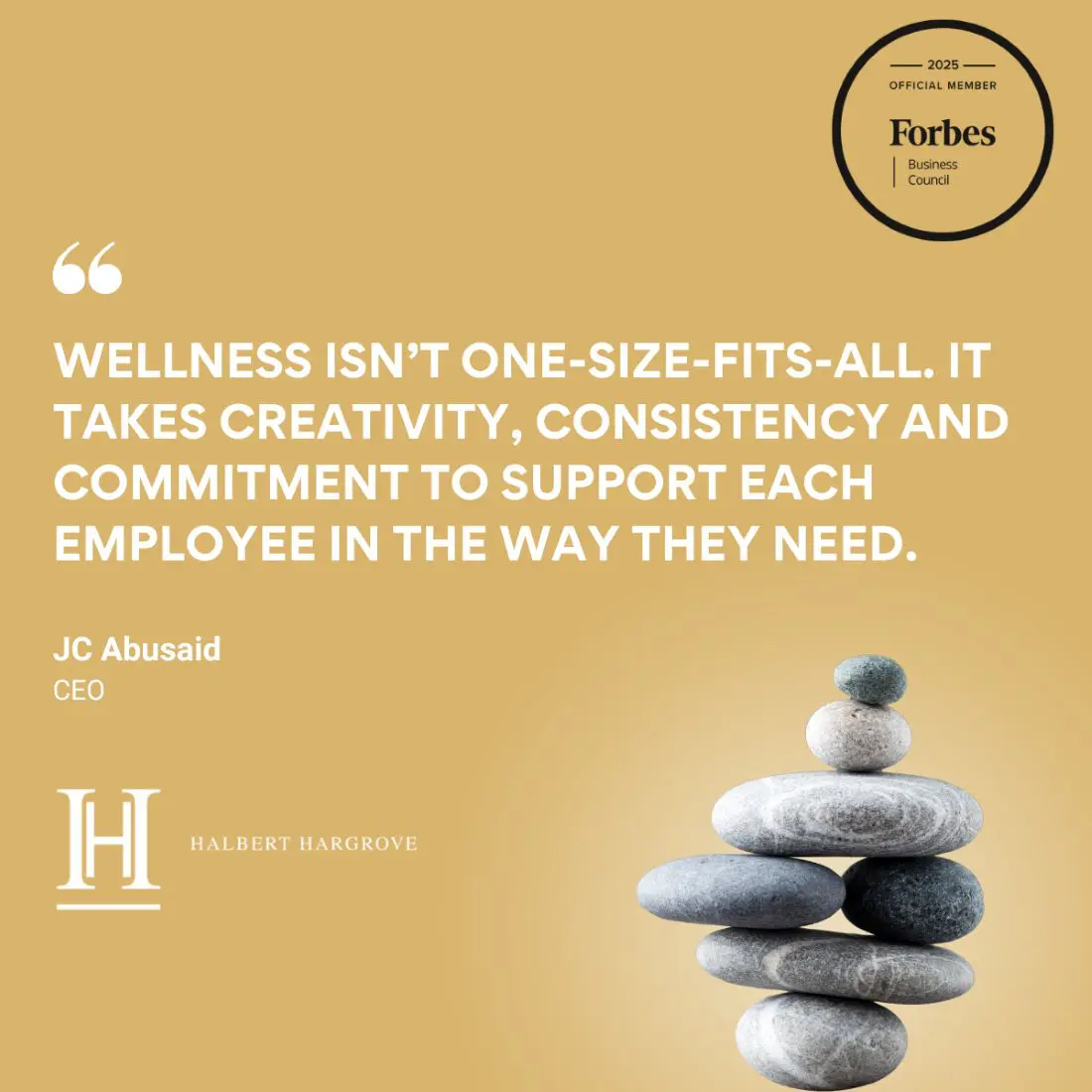By Lilly Riddle in CityWire, featuring JC Abusaid, CEO/President
Halbert Hargrove’s chief executive spoke to Citywire about the $3.5bn RIA’s growth, his executive philosophy and staying the course amid market volatility.
With tariff turmoil sending markets into correction territory, many advisors have had to question the reliability of certain investments, troubleshoot client anxieties and navigate uncharted territories. JC Abusaid, however, has seen it all.
Long Beach, Calif.-based Halbert Hargrove’s CEO of the past three years — and a part of the $3.5bn firm since 1996 — Abusaid (pictured) has worked through the dot-com bubble crash of 2000, the 2008 financial crisis and the coronavirus-induced stock market collapse of 2020. He has watched his firm evolve from its initial focus on institutions and retirement planning to serving high net worth clientele.
Recently, Abusaid sat down with Citywire to discuss Halbert Hargrove’s growth strategy, his personal philosophy as chief executive and what he envisions for the firm’s future in a wide-ranging conversation.
The interview has been edited for clarity and length.
Citywire: You’ve been with Halbert Hargrove for nearly three decades now, including as COO, president and now chief executive. How have you seen the firm evolve over the course of the time you’ve been there?
JC Abusaid: [Early on], we wanted to build a company, and we were more or less a practice, like most RIAs back in the day… We focused a lot on making the firm robust, making sure that we were centralized. We focused a lot on process and making sure that everything could be repeated, meaning it didn’t matter who was your advisor. It was Halbert Hargrove, the brand. So [there was] a lot of focus on institutionalizing how we do things, from the investment side to the wealth management side.
A lot of firms deemphasized the idea that you could differentiate yourself and the way you did investments. People said, ‘Oh, investments are a commodity, just go passive, and bada bing, bada boom, you’re done.’ We don’t believe in that.
CW: How have Halbert Hargrove’s portfolio management and investment strategies changed over time?
JA: I’ve been at the firm since the ’90s, and we’ve seen two or three cycles of what we’re going through right now, but worse. We developed some strategies that were different, [such as] a momentum strategy. For this strategy, what we do is we follow a signal. There’s no human input, it’s just a moving-day average signal. We trade on that signal, so we trim the equity exposure that clients have when the signal processes, and we do that in a single day. Not everybody has this. Ninety or 98% of our clients have this exposure, [but] it’s very helpful in managing clients’ expectations during volatility like this, because the first thing that clients want is — they think you have a crystal ball. They want you to be trading or doing something to further protect their assets. Our answer is always, ‘Well, we always create portfolios taking into account risk.’
What’s helpful about this specific strategy is that by the time they pick up the phone, the momentum strategy has triggered the trade and we can tell them that we’ve trimmed their equity exposure and that they have additional cash available, which is very helpful in managing the stress and the anxiety that people have.
CW: Could you talk a little more about that moving average?
JA: It’s a moving day average signal. We have two exposures of it. The Russell 1000 [index] is one of them… Obviously, we’re not going to trade every time it crosses, so we make sure it crosses, and then we wait to make sure it stays there for, I think it’s a day in a certain percentage before we trade it. Obviously there’s tax implications for the trade, but we still go through with it.
CW: You mentioned your firm moved away from an institutional approach toward the individual client experience. Why the shift?
JA: What we found was the client experience, the associate experience in providing advice was horrible. You’re working with a committee, or let’s say you help a firm establish a retirement plan, a 401(k). They start with minimum assets, you help them build up [to a] $5m or $10m plan, and there’s a change in the management structure of the company you’re helping, and you don’t even get a notice. You simply get replaced. So that was one — we didn’t feel that there was loyalty, and it was very disappointing, because as the plans become bigger, they become more visible to the rest of the world and everybody starts pitching them.
The other part of it was the idea that we [couldn’t] build a relationship… on the institutional side, it was always about, ‘Can you lower your fees? Can you do it for less? What else can you do for me?’ It was never based on developing a relationship and really enjoying the partnership.
CW: When would you say that shift happened?
JA: Probably coming out of 2008, 2009. We were already feeling that was the trend that was happening… So we doubled down and became specific, and then that’s when we literally put out a policy that said, ‘No more retirement plans [and] no more institutional business.’ That’s when it was like, ‘We will only accept those on an exceptional basis if you [provide] the rationale and why you want to take on that business.’
CW: Going back to our current state of affairs for a moment, how would you say this round of market volatility compares to the previous bouts of uncertainty you’ve navigated?
JA: It’s not yet as big of a crisis. The key word there is ‘yet.’ The good news is, when you’ve been around as long as we have, this is not new territory. So, one, we’ve been ramping up our messaging to clients. Secondly, and more importantly, I think the focus has been… ‘Everybody, go and take care of clients, keep them at ease, explain to them what we’re doing this time.’ I would say this is the most organized I’ve seen the firm, execut[ing] on all-hands-on-deck meetings on Mondays, collaboration, a lot of open-forum types of meetings where the whole firm is talking about how clients are reacting.
We have in excess of 10 offices [and] very small main headquarters in Long Beach, but obviously this is an environment where, unfortunately, politics plays a big part. If you’re in California, we have a lot of clients that are really concerned about what’s going on. If you have clients in Texas, it’s a different picture. The whole idea is collaboration, sharing of ideas, sharing of perspectives, how we’re talking to clients, what’s working, what’s not working and then providing timely updates so that everybody knows and is informed about whatever changes are happening or coming from Washington.





